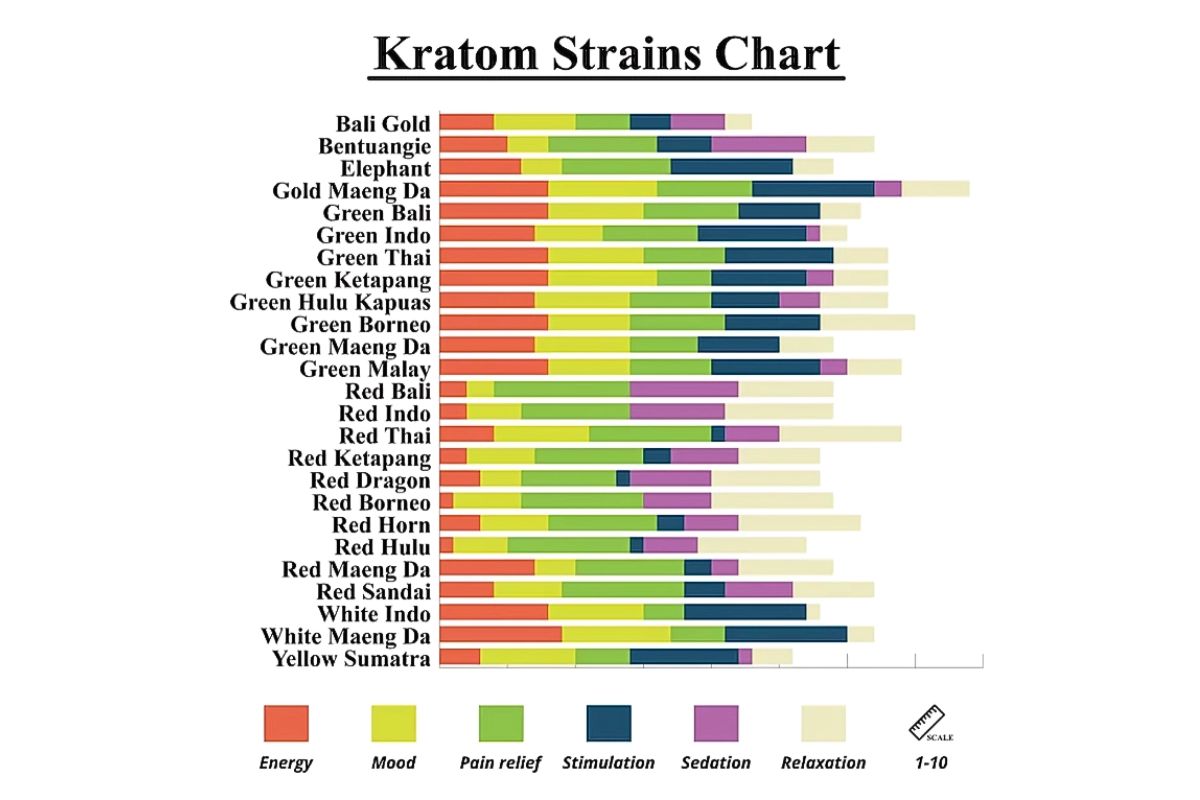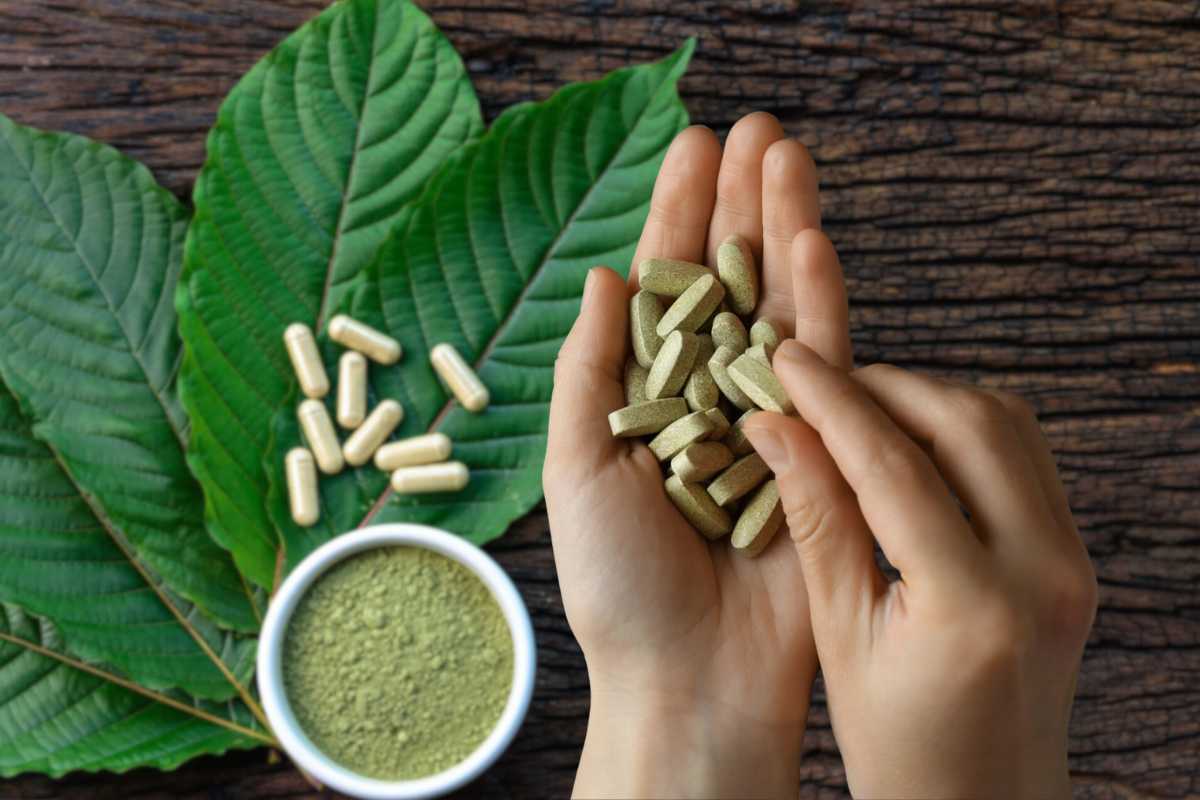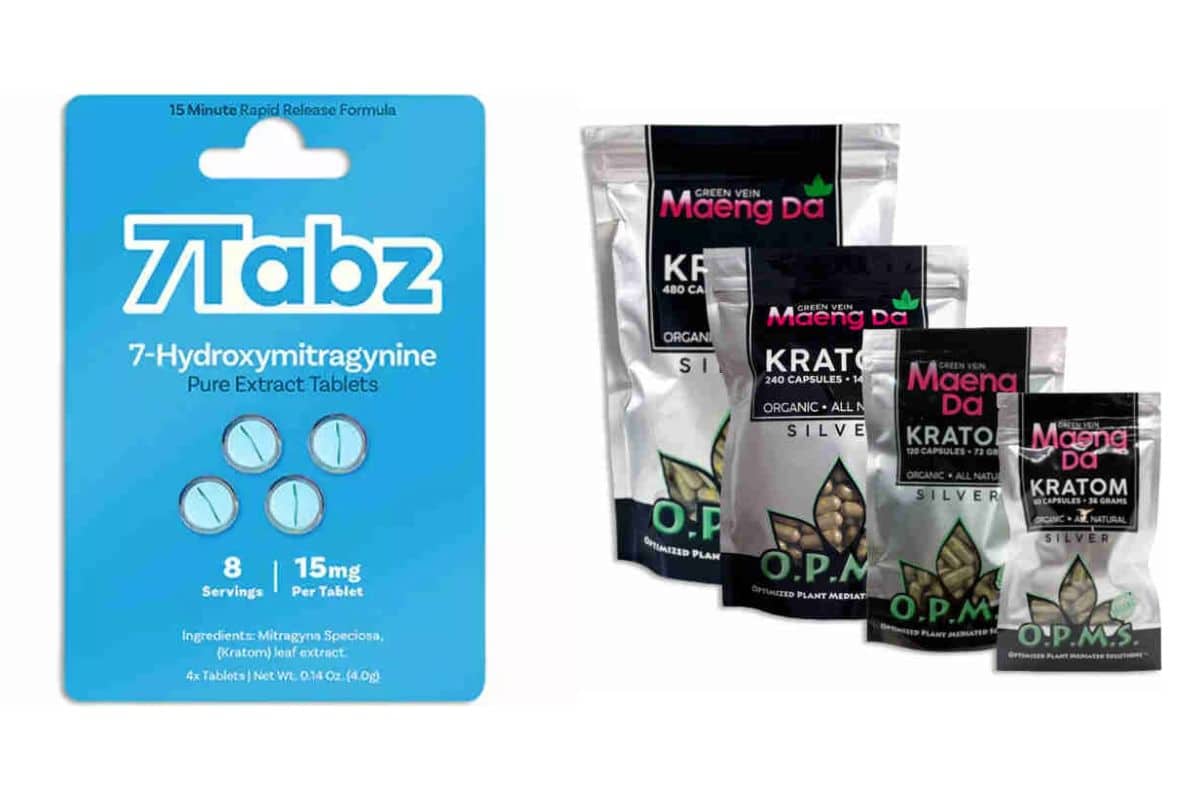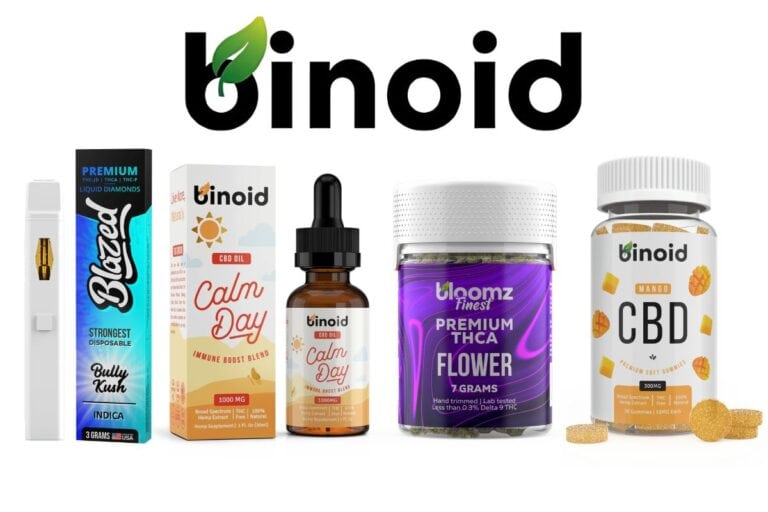The Best Kratom for Anxiety and Pain Relief: Top Strains to Consider
Introduction to Kratom
The kratom tree, mitragyna speciosa, known scientifically as Mitragyna speciosa, is a tropical evergreen tree native to Southeast Asia, especially Thailand, Indonesia, Malaysia, and Papua New Guinea. The kratom leaves of this tree contain several active alkaloids, the most notable being mitragynine and 7-hydroxymitragynine, which interact with the opioid receptors in the brain, producing effects similar to both stimulants and opioids depending on dosage.
Traditionally, indigenous populations have used different kratom strains, particularly kratom leaves, as natural solutions for kratom use centuries, especially for those seeking pain relief, to manage pain, reduce fatigue, and elevate mood. In recent years, kratom has gained popularity worldwide as a natural alternative to pharmaceutical painkillers and anti-anxiety medications.
- Introduction to Kratom
- Kratom Strains for Pain Relief
- Benefits of Kratom
- Kratom Forms and Products
- How to Choose the Best Kratom
- Kratom for Energy and Focus
- Kratom Safety and Precautions
- Kratom and Discomfort Relief
- Kratom Vendor Selection
- Kratom Product Quality
- Kratom and Mental Health
- Kratom Dosage Guide
- Kratom Preparation Tips
- Legal Status of Kratom Worldwide
- Conclusion
- Frequently Asked Questions About Kratom
- What is Kratom?
- Is Kratom Legal?
- Is Kratom Addictive?
- What Are the Common Side Effects of Kratom?
- How Long Do Kratom Effects Last?
- How Should I Dose Kratom?
- Can I Take Kratom Daily?
- How Can I Consume Kratom?
- Can Kratom Interact With Other Medications?
- Is Kratom Safe for Everyone?
- What Are the Best Kratom Strains for Pain Relief?
- Can Kratom Help With Anxiety?
- How Do I Know If I'm Buying Quality Kratom?
- What Is a Kratom Tolerance Break?
- What Is the Difference Between Red, Green, and White Vein Kratom?
- Can Kratom Help With Opioid Withdrawal?
- Does Kratom Show Up on Drug Tests?
- How Is Kratom Different From Marijuana or CBD?
- Can You Build a Tolerance to Kratom?
- Are There Any Withdrawal Symptoms From Stopping Kratom?
- What Are Kratom Extracts?
- What Are Some Trusted Kratom Brands?
The American Kratom Association actively promotes safe and responsible kratom powders use, advocating for quality control and good manufacturing processes to protect consumers. Their efforts have led to increased awareness and regulatory clarity in many regions.
Kratom Strains for Pain Relief
Red Bali Kratom
Red Bali is renowned for its potent pain-relieving and relaxing effects. It is rich in 7-hydroxymitragynine, which contributes to its powerful analgesic properties. Users often report relief from chronic pain conditions such as arthritis, fibromyalgia, and back pain after consuming red bali kratom.
Green Maeng Da Kratom
Green Maeng Da offers a unique blend of pain relief and soothing properties along with energy. It contains a balanced alkaloid profile that helps soothe pain while providing mild stimulation, making it an excellent choice for those needing both comfort and alertness for the same effects.
Red Thai and Green Malay
Red Thai is praised for its calming effects, helpful in managing anxiety and moderate pain, while Green Malay is known for longer-lasting pain relief and mood enhancement.
How Kratom Works for Pain
Kratom’s alkaloids bind to the opioid receptors but without the high addiction potential seen in traditional opioids, providing discomfort relief. This interaction helps reduce the sensation of pain while also boosting endorphin levels that improve mood, providing additional stress relief.
Benefits of Kratom
Kratom is not only effective for pain relief but also offers multiple other benefits, including those from red strains and other strains :
- Mood Enhancement: Kratom can improve mood and reduce symptoms of depression and anxiety.
- Stress Relief: Many users find kratom helpful for relaxation and stress management.
- Energy Boost: In lower doses, kratom acts as a stimulant, increasing energy and focus.
- Anxiety Reduction: It helps calm the mind and body, making it a natural alternative to anti-anxiety medications.
- Withdrawal Aid: Kratom has been used to ease opioid withdrawal symptoms by reducing cravings and discomfort.
Kratom Forms and Products
Kratom Powder
Kratom powder is the most common form. It is versatile and can be mixed into drinks, capsules, or brewed as tea. Powder form allows easy dosage adjustments.
Capsules
Capsules offer convenience and precise dosing. They eliminate the bitter taste of kratom powder and are ideal for on-the-go use.
Kratom Tea
Kratom tea, often made from green vein leaves, is a traditional consumption method where leaves or powder are steeped in hot water. This form provides a soothing experience and allows for gradual effects.
Kratom Extracts
Extracts are concentrated forms of kratom that are made from finely milled powder , providing stronger effects with smaller doses. They can be tinctures, resins, or enhanced powders.
How to Choose the Best Kratom

Selecting the right strain of kratom depends on your needs for treating anxiety disorder :
- Desired Effects: Pain relief, energy, or anxiety reduction.
- Strain Type: Red for relaxation, Green for balance, White for stimulation.
- Vendor Reputation: Trusted vendors provide lab-tested, contaminant-free products.
- Quality Assurance: Look for products with certificates of analysis.
- Customer Reviews: Feedback can indicate product consistency and satisfaction.
Kratom for Energy and Focus
At lower doses, kratom exhibits stimulant effects, enhancing focus and productivity. Strains such as Green Malay and White Vein kratom are favored for this purpose. Many users turn to kratom, which is part of the coffee family, as a coffee alternative because it provides energy without the jitters or crash associated with caffeine. Improved energy and mental clarity from kratom can help those with fatigue or concentration difficulties, positively affecting mental well-being.
Kratom Safety and Precautions
| Category | Details |
|---|---|
| Recommended Dosage | Start with a low dose (1-2 grams); avoid exceeding 8 grams per day to reduce risk of side effects. |
| Possible Side Effects | Nausea, dizziness, constipation, dry mouth, increased urination, insomnia, irritability. |
| Interactions | Avoid combining with alcohol, sedatives, opioids, or other substances that depress the CNS. |
| Health Conditions | People with liver disease, kidney disease, heart conditions, or mental health disorders should consult a doctor before use. |
| Pregnancy & Breastfeeding | Not recommended due to lack of safety data. |
| Addiction Risk | Potential for dependence and withdrawal symptoms with prolonged, high-dose use. |
| Legal Status | Varies by region; check local laws before purchase or use. |
| Storage | Keep in a cool, dry place away from children and pets. |
| Quality | Use only from reputable sources to avoid contamination or adulteration. |
| Consult Healthcare Provider | Always advisable before starting, especially if taking medications or with underlying health issues. |
Kratom is generally safe when used responsibly. However, consider these precautions:
- Avoid high doses to prevent nausea or dizziness.
- Do not mix kratom with alcohol or other drugs.
- Consult a healthcare professional if you take prescription medications.
- Use kratom in moderation to prevent tolerance and dependency.
- Check local regulations, as kratom legality varies.
Kratom and Discomfort Relief
Kratom is effective for relieving both acute and chronic discomfort. It helps reduce muscle soreness, joint pain, and inflammation. Strains like Red Bali provide deep relaxation that supports restful sleep, essential for healing and pain management. Unlike traditional painkillers, kratom provides discomfort relief and does not suppress the respiratory system, making it safer for long-term use.
Kratom Vendor Selection
To ensure safety and effectiveness, select vendors who:
- Follow Good Manufacturing Practices (GMP).
- Provide third-party lab test results.
- Have transparent sourcing and production processes.
- Offer customer support and clear return policies.
- Have positive customer reviews and a trustworthy reputation.
Kratom Product Quality

High-quality kratom capsules and other kratom products:
- Are finely milled and free of contaminants.
- Use freshly harvested leaves.
- Maintain alkaloid potency through proper storage.
- Offer standardized extracts for consistent effects.
- Are packaged to preserve freshness and potency.
Kratom and Mental Health
Emerging studies suggest that natural compounds in kratom may benefit mental health conditions such as anxiety and PTSD by promoting calmness and reducing stress, ultimately enhancing overall well being.
However, more research is needed, and kratom should complement professional mental health treatments rather than replace them.
Kratom Dosage Guide
- Microdosing: 1-2 grams for mild stimulation and focus.
- Moderate dose: 3-5 grams for pain relief and mood enhancement.
- High dose: 6-8 grams for sedation and intense relief (use with caution).
Start with a low dose and gradually increase while monitoring your body’s response.
Kratom Preparation Tips
| Consumption Method | How to Make / Preparation Steps | Tips |
|---|---|---|
| Kratom Powder (Toss & Wash) | 1. Measure your desired dose (usually 1-3 grams for beginners). 2. Place the powder directly into your mouth. 3. Quickly drink water or juice to wash it down and reduce bitterness. | Use citrus juice like orange or lemon juice to help mask bitterness. |
| Kratom Tea | 1. Boil about 2 cups of water. 2. Add 2-5 grams of kratom powder or crushed leaves. 3. Simmer on low heat for 15-20 minutes. 4. Strain the liquid to remove powder. 5. Add honey or lemon for flavor if desired. 6. Drink warm or cold. | Avoid boiling too long to preserve alkaloids; simmer gently. |
| Capsules | 1. Fill empty gelatin or vegetarian capsules with measured kratom powder using a capsule filler or by hand. 2. Seal capsules. 3. Swallow capsules with water. | Capsules provide tasteless and convenient dosing but take longer to feel effects. |
| Kratom Extract | 1. Use ready-made kratom extract or make by boiling kratom powder and reducing the liquid to a thick concentrate. 2. Dilute a small amount in water or juice. 3. Drink slowly due to high potency. | Start with a very small dose—extracts are much stronger than powder. |
| Mix with Food or Drink | 1. Measure your kratom powder dose. 2. Stir powder into thick foods like yogurt, applesauce, or smoothies. 3. Consume immediately to avoid bitter taste spreading. | Mixing with creamy or sweet foods helps mask bitterness. |
| Kratom Resin | 1. Boil kratom powder in water, stirring constantly until water reduces and forms a thick paste. 2. Remove from heat and let cool. 3. Cut into small pieces or roll into balls. 4. Consume small amounts as needed. | Resin is more concentrated; start with smaller amounts. |
- For tea: steep powder in hot water for 10-15 minutes, strain before drinking.
- Mix powder with citrus juice (like lemon) to enhance alkaloid absorption.
- Use capsules if you dislike the bitter taste.
- Store kratom in airtight containers away from light and moisture.
Legal Status of Kratom Worldwide
Kratom’s legal status varies globally:
- USA: Legal federally but banned in some states.
- Europe: Mixed legality; some countries ban it.
- Asia: Often illegal, but used traditionally.
- Australia/New Zealand: Generally banned.
Always check local laws before purchasing or traveling with kratom.
Conclusion
Kratom provides a natural, versatile option for managing anxiety and pain, with a variety of strains suited for different needs, ensuring consistent quality. Selecting high-quality kratom products from reputable vendors and following safe dosing guidelines can maximize benefits while minimizing risks. Whether for chronic pain relief, mental health support, or energy enhancement, kratom remains a promising herbal solution.
Frequently Asked Questions About Kratom
What is Kratom?
Kratom is a tropical tree native to Southeast Asia whose leaves have been used for centuries for medicinal purposes. It contains alkaloids that interact with the body’s opioid receptors, providing effects ranging from pain relief to energy boosts depending on the dose.
Is Kratom Legal?
Kratom’s legal status within the kratom market varies by country and sometimes within regions of a country. In the United States, it is legal federally but banned in some states and cities. Always check your local laws before purchasing or using kratom.
Is Kratom Addictive?
While kratom interacts with opioid receptors, it generally has a lower addiction potential than traditional opioids when used responsibly and in moderate doses. However, misuse or high-dose prolonged use can lead to dependence and other adverse effects.
What Are the Common Side Effects of Kratom?
Some users may experience side effects such as nausea, dizziness, constipation, dry mouth, or headaches, especially at higher doses. Starting with a low dose and staying hydrated can help minimize these effects.
How Long Do Kratom Effects Last?
Effects usually begin within 15 to 30 minutes after consumption and can positively affect sleep quality, lasting between 4 to 6 hours, depending on the dose and individual metabolism.
How Should I Dose Kratom?
It’s best to start with a low dose, typically 1-2 grams, and gradually increase if needed. Moderate doses (3-5 grams) provide balanced effects, while higher doses (6-8 grams) may cause sedation and stronger pain relief but come with increased risk of side effects.
Can I Take Kratom Daily?
Daily use is not recommended as it can lead to tolerance and dependence. Taking breaks or using kratom only as needed helps maintain effectiveness and reduces risk.
How Can I Consume Kratom?
Kratom is available as powder, capsules, tea, and extracts. Powder can be mixed into drinks or brewed as tea. Capsules offer convenience and mask the bitter taste, while extracts are more potent and require careful dosing.
Can Kratom Interact With Other Medications?
Yes, kratom can interact with certain prescription medications, especially those affecting the central nervous system. Always consult your healthcare provider before combining kratom with other drugs.
Is Kratom Safe for Everyone?
Kratom is not recommended for pregnant or breastfeeding women, children, or individuals with certain medical conditions such as liver disease. Always consult a healthcare professional before use.
What Are the Best Kratom Strains for Pain Relief?
Popular pain-relieving strains include Red Bali, Green Maeng Da, red veins like Red Thai, and white kratom green vein. These strains provide varying levels of analgesia and relaxation suited for different types of pain.
Can Kratom Help With Anxiety?
Yes, many users find kratom helpful for reducing anxiety and promoting relaxation with calming effects , and they also report euphoric effects, particularly from strains like Red Bali and Green Malay. However, effects vary between individuals.
How Do I Know If I’m Buying Quality Kratom?
Choose vendors like golden monk who provide the best kratom, including ird-party lab testing results, follow good manufacturing practices, and have positive customer reviews. Quality kratom is finely milled, free from contaminants, and packaged to preserve freshness.
What Is a Kratom Tolerance Break?
A kratom tolerance break is a short period where you stop using kratom to reset your body’s sensitivity to it. This helps maintain its effectiveness and lowers the risk of dependence.
What Is the Difference Between Red, Green, and White Vein Kratom?
- Red vein kratom is known for its pain-relieving and relaxing effects.
- Green vein kratom provides a balanced mix of energy and pain relief.
- White vein kratom is more stimulating and great for focus and energy.
Can Kratom Help With Opioid Withdrawal?
Some users have used kratom to ease symptoms of opioid withdrawal, including pain, anxiety, and insomnia. However, more research is needed, and it should be done under medical supervision.
Does Kratom Show Up on Drug Tests?
Standard drug tests (such as those for employment) typically do not screen for kratom. However, specialized tests can detect kratom’s alkaloids if specifically targeted.
How Is Kratom Different From Marijuana or CBD?
Kratom works mainly through opioid receptors, offering pain relief and energy modulation. CBD is non-intoxicating and interacts with the endocannabinoid system. Marijuana contains THC, which produces a psychoactive high. Each has distinct mechanisms and benefits.
Can You Build a Tolerance to Kratom?
Yes, frequent use can lead to tolerance, requiring higher doses for the same effect. Rotating strains and taking regular breaks helps prevent this.
Are There Any Withdrawal Symptoms From Stopping Kratom?
If used heavily over time, some people may experience mild withdrawal symptoms such as irritability, fatigue, and sleep disturbances. Gradual tapering can reduce the severity of withdrawal.
What Are Kratom Extracts?
Kratom extracts are concentrated forms of kratom made by boiling down the leaves into a potent resin or liquid. They are more powerful than standard powder and should be used with caution.
What Are Some Trusted Kratom Brands?
Reputable kratom strain vendors include Golden Monk, Kratom Country, a notable kratom country, Happy Hippo Herbals, and Kona Kratom. These brands are known for quality, transparency, and third-party lab testing.








